BREAKING NEWS ITEMS [2010]
"President Barack Obama Speaks at a Political Rally at
USC'"

October 22, 2010; 1:45 PM PDT; My wife and I attended a political rally for Sen. Barbara Boxer
at Alumni Park of the University of Southern California on a beautiful Friday afternoon in
Southern California. The keynote speaker was President Barack Obama, who spoke to an
audience of more than 37,500 students and friends. Click on his photo above for more details
from The Los Angeles Times. - - Steve Coles
"Former President Bill Clintion Attends Political Rally at
UCLA'"

Friday, October 15, 2010; 8:00 PM PDT; Former President Bill Clinton attended and spoke at a
political rally for Jerry Brown for Governor of California. My wife and I shook hands with him
along with dozens of Democratic supporters. - - Steve Coles
"2010 Nobel Prize in Physiology and Medicine for IVF'"
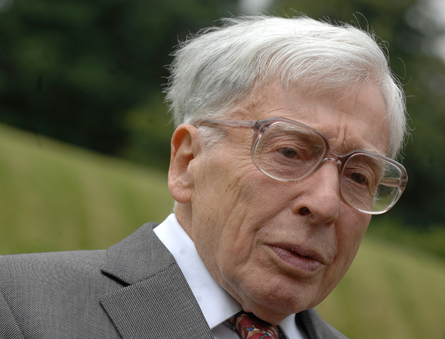
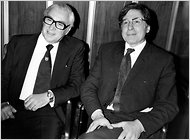
Robert G. Edwards (R) and Dr. Patrick Steptoe in 1979. The two developed the in vitro
fertilization procedure, facing much opposition on ethical and religious grounds.
October 4, 2010; (by Katherine Hobson; WSJ) -- Millions of couples who have
overcome infertility and gone on to have healthy, happy kids owe a big debt of thanks to Robert
Edwards, the winner of this year's Nobel Prize in Medicine. Edwards, of the University of
Cambridge, was one of the developers of in vitro fertilization, (IVF) the reproductive technology
that allows egg and sperm to be united in a test tube, then introduced into the womb for a normal
pregnancy. Edwards is 85. Dr. Patrick Steptoe died 12 years ago, and the Nobel cannot be
awarded posthumously.
The Nobel committee said in a statement that "close to 4 million babies have been born
thanks to the discovery of human IVF. Most famous was the first so-called test tube baby, Louise
Brown, born in the U.K. in 1978. Elizabeth (Carr) Comeau, the first such baby born in the U.S.,
in 1981, also garnered a lot of attention, and recently wrote about the birth of her own first child
-- conceived and delivered "the normal way," as she puts it.
Edwards had "an exceptionally broad knowledge of the fertilization process, gained through
many years of basic research on animal reproductive physiology," the Nobel statement says. That
background helped him in his research on IVF, starting in the 1950s. He eventually settled on the
idea of using mature eggs, removed just before ovulation, rather than removing eggs at an earlier
stage and allowing them to develop in a test tube. He worked with Steptoe to develop the best
way of harvesting eggs at this stage in the reproductive cycle, using the then-novel technique of
laparoscopic surgery.
Edwards went on to show that eggs removed this way could be combined with sperm
prepared in a test tube could develop into 8-celled embryos and then, later, that eggs fertilized
this way could go on to divide further before being implanted in the womb.
The Nobel statement also says Edwards "realized from the onset that IVF research would
raise many important ethical concerns that had to be addressed." With a lawyer, he wrote a
visionary key paper that initiated a debate on many of the complicated issues related to
reproductive medicine that lay ahead." Edwards won the Lasker Award for clinical medical
research in 2001.
Refs.:
1. Robert Lee Hotz, "In Vitro Pioneer Wins Nobel: British Scientist's Work Has Enabled
the Birth of Four Million Test Tube Babies," The Wall Street Journal, pp. A1,3
(October 5, 2010). Click for more details.
2. Thomas H. Maugh, II, "He Helped Millions Have Babies: The Nobel Prize for Medicine
Goes to Robert G. Edwards, a Briton Who Pioneered In Vitro Fertilization," The Los
Angeles Times, p. A11 (October 5, 2010).
3. Nicholas Wade, "Pioneer of in Vitro Fertilization Wins Nobel Prize," The New York
Timespp. A1, 3 (October 5, 2010).
The New York Times
4. PBS News Hour You
Tube (TRT = 8:54 min.).
5. Vanessa Schipani, "IVF Pioneer Earns Nobel: Robert Geoffrey Edwards Has This Year's Prize
in Physiology or Medicine for Developing the Technique of In Vitro Fertilization," The
Scientist (October 4, 2010).
6. Nathan Seppa, "Medical Nobel Goes to Developer of IVF: Robert Edwards Receives Prize for
Work that Led to Four Million Births," Science News (October 4, 2010).
"Federal Judge Blocks NIH Funding of Human
Embryonic Stem Cell Research'"
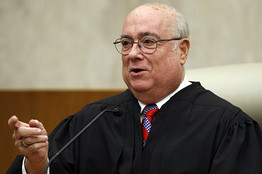
Judge Royce C. Lamberth was elected by President Reagan in 1987;
he just wrote a 15-page ruling blocking stem-cell research using Federal funds.
August 23, 2010; Passed by the Congress in 1996, during the Clinton Administration, The
Dickey Wicker Amendment attached to all subsequent NIH Appropriation Bills
prohibits Federal funding for any research that, as a side effect, destroys human embryos. A
distinction between pre- and post-implantation embryos is not made. In March of 2009,
President Obama reversed the restrictive previous Administration's policy, announced from
President Bush's ranch in Crawford, TX, of not funding any human embryonic stem-cell research
on cell lines that did not exist prior to August 9, 2001. Thus, new cell lines then became eligible
for grant funding under recent NIH Guidelines for lines derived from excess frozen embryos
from IVF (in vitro fertilization) stored in liquid nitrogen that would normally have been
destroyed and for which informed consents had been signed by the donor(s) for their blastocysts
to be optionally used for research purposes.
Everything was moving along smoothly until today, when Federal Judge Royce C. Lamberth of
the District Court in Washington, D.C. reversed the Obama Administration policy and blocked
all Federal funding on human Embryonic Stem Cells on the grounds that it should be prohibited
by Dickey Wicker and should be considered illegal under existing law. What happens next,
assuming an appeal by the Obama Justice Department to the Circuit Court, is unknown [1 - 9].
Editorial:
We have been tracking the hESC topic on this website for over ten years. We have
systematically argued against the right-wing, Christian evangelical position. Note that these
same pro-life groups were the ones that sadly delayed the timely implementation of California
Proposition 71 (for which we hand-carried petitions to get it on the ballot) for over two years in
various court rooms in Oakland and San Francisco before CIRM was allowed to proceed in
California. We wrote an entire white paper on the ethics of hESC research three years ago,
which will soon be published as a Chapter in the forthcoming book The Future of
Aging edited by Coles, Fahy, Harris, and West (Springer, New York; October 2010).
This ruling came as a complete surprise to the scientific researchers who would be most
affected under NIH grants. Even though this issue should, in principle, be non-partisan, we hope
that the full wight of public opinion will fall on the petitioners during the weeks leading up to the
upcoming November elections. One of the prior plaintiffs was
The Christian Medical and Dental
Association and another was
The Nightlight Christian Adoptions organization (which first coined the bizarre phrase
snowflake babies) and is run by Ronald Stoddart, Executive Director. Still
another prolife advocacy group is Americans United for Life
run by Charmaine Yoest, President. Click for the
AUL website.
It has not escaped our attention that the fact that all of these organizations have such
patriotic-sounding names is not a mere coincidence. Wrapping one's self in both the
American flag and in Christianity can help deceive the uninitiated as to their true anti-abortion
agenda. (You can fool some of the people some of the time, but not all of the people all of
the time.)
Most of the first group of plaintiffs' pleas were rejected on the grounds of "lack of standing." In
a second round of legal filings, the remaining plaintiffs were Dr. Theresa Deisher, Ph.D. of
AVM Biotechnology in Seattle, WA [which stands for Ave Maria... How cute is that?] and
Dr. James L. Sherley, M.D., Ph.D. of the Boston Biomedical Research Institute. A few
years ago, Dr. Shereley was denied tenure at MIT. He currently holds an NIH Grant of
$425,000.
If the plaintiffs were to lose their decision on appeal, this legal motion will almost certainly go to
the Supreme Court sometime in 2011, knowing their determination and combined resources, as
they have a reputation of being absolutist, uncompromising fundamentalists. Thus, it is likely
that they will have to be obliterated in the highest court before they will give way and free
biological science to get back to its prime directive - - the imperative of seeking to cure
age-related chronic diseases. The continuing discussion by our adversaries regarding the alleged
distinction between adult stem cells (OK) and hESC's (not OK) is a snare and a delusion. No one
can say with authority what science should be working on (or not working on), as a matter of
principle. We need to go where the science leads us. Maybe CIRM will help us to shine a light
on this religious controversy in the coming years; especially when we learn more about the
stemness of pre-oocytes and
spermatogonia, forming the female and male germ lines, respectively. These are the cells
that ultimately lead to fertilized zygotes, which the evangelicals consider to be so sacred their
destruction in the normal course of ethical, IRB-approved research, for them, would be
considered tantamount to murder; that is to say, pure-as-the-driven-snow scientists in their white
lab coats would be charged with homicide in-the-first-degree and sent to prison for lethal
injection (or perhaps burned at the stake or maybe stoned-to-death for heresy, as an example of
how the unfaithful should be made to conform [just kidding]. But has this ever happened in
history? Yes, during the Spanish inquisition, many times, not to mention torture of the worst
types.) Scientists unite. Be prepared to either leave this country or else fight your adversaries to
the death, all for the sake of your principles, freedom of science and medicine. I prefer the latter
alternative and am willing to say so in public. - - L. Stephen Coles, Editor
Refs.:
1. Jeffrey Toobin, CNN Senior Legal Analyst CNN (August 23, 2010). This is the holy grail for biological science and
medicine. If it gets to the Supreme Court, it may split 5:4 with Justice Kennedy in the middle.
2. Laura Medkler, Gautam Naik, and Brent Kendall,
The Wall Street Journal, pp. A1,2
(August 24, 2010).
3. Karen Kaplan and Norm N. Levey, "Ruling a Blow to Stem-Cell Research: A Federal Judge
Blocks U.S. Funding for All Projects Involving the Use of Material from Human Embryos,"
The Los Angeles Times, pp. A1,10 (August 24, 2010).
4. Gardener Harris, "Judge Calls Halt to Stem Cell Aid Backed by Obama: Shock to Researchers:
Destruction of Embryos and Federal Money are at Issue" The New York Times, pp. A1,12 (August 24, 2010).
5. Abby Philip, "Stem Cell Funding Gets Put on Hold,"
USA Today,
p. 6A (August 24, 2010).
6. American Society for Reproductive Medicine
National Public Radio; KPFC-FM (August 24, 20120; 7:00, 7:10, 10:06 [Dr. Gay
Crooks, M.D. of the UCLA David Geffen School of Medicine (Pathology and Laboratory
Medicine) and Alan Trounson, President of CIRM on Air Talk] AM PDT).
7. Arthur Kaplan, University of Pennsylvania in Philadelphia, Interview, KPFK-FM
(August 24, 2010; 6:55 AM PDT).
8. Gretchen Vogel, Jocelyn Kaiser, "Injunction Leaves Stem Cell Research in Legal Limbo,"
AAAS Science News (August 24, 2010).
9. "Stem Cell Case - - Valid?"
The Scientist
(August 24, 2010).
10. Thomas H. Maugh, II, "The Pair Behind the Stem-Cell Suit: Before Their Court Case, Both
Had a History of Making News on Other Issues," The Los Angeles Times, p. A10
(August 25, 2010).
11. Karen Kaplan, "Scientists Rush To Use or Redirect Stem-Cell Funds," The Los Angeles
Times, p. A10 (August 25, 2010).
12. Laura Meckler, "Ruling's Opponents Plan Challenges," The Wall Street Journal, pp.
A1,3 (August 25, 2010). [Hearings in the US Senate are currently scheduled for September 16th
when the Congress returns from its Summer Break {Sen. Tom Harkin (D., IA)}.]
13. Gautam Naik, "U.S. To Freeze New Grants After Stem-Cell Decision," The Wall Street
Journal, pp. A1,3 (August 25, 2010).
There is an extraordinary quote from David Stevens, the Executive Director of the Christian
Medical and Dental Association (CMAD), which boasts 17,000 members. Stevens said, "People
forget that each one of us was [once] an embryo, and if someone destroyed us for biological
parts, we wouldn't be around today."
My response to this tautology would be "So what?" If I wouldn't be around, I wouldn't be around.
Let me try and say this another way: "SO WHAT?" I WOULDN'T BE AROUND BECAUSE
THERE WOULDN'T BE AN "I" TO BE AROUND IN THE FIRST PLACE. Unless, of course,
if I weren't here because I actually was somewhere else. In which case, we'd have to ask "So
where was I?" In limbo or purgatory? Obviously, if I was an "I" (because I was already a
person, say a person who was already born, and somebody attempted to steal/abscond with
my biological parts without my consent, I would fight to the death to prevent such a preposterous
scenario from ever taking place. There was an obvious lack of understanding of the
semantics/pragmatics of the term "personhood," i.e., what constitutes a "person," not an act of
"hominization" or "ensoulment" which are terms that are employed in theology/philosophy
classes, not biology/chemistry classes.
Was the quote above supposed to be an argument to persuade medical scientists to avoid the
destruction of human embryos or else suffer the adversity of these potential human beings
collectively coming back to haunt them as ghosts, zombies, or restless spirits? Not a very
compelling argument. This is sometimes called the fallacy of confusing "potentiality" with
"actuality." Imagining that a random pile of bricks is a cathedral is bad thinking, just
because it could be. They could also be used to form a commercial shopping center. It all
depends on the blue prints used by the architects and by the contractors. Go back to Aristotle's
theory of causality (material, formal, efficient, and final causes) if you need to, to better
understand how these presuppositional logic problems occur in ordinary language
(Aristotle's Causes).
Smashing an acorn is not the same as chopping down a 50 year-old mature oak tree without
permission. There are different implications (legal and moral) for each of these acts,
notwithstanding the fact that acorns and oak trees contain the same DNA. One should not
imagine that the penalty for chopping down a mature tree on somebody's private property without
authorization should be applied to the act of crushing an acorn under foot. I am not sure there is a
name for this fallacy (such as "begging the question" or "post hoc ergo proper hoc" which does
have a name in a course in Logic or Rhetoric), but I'm sure it's a fallacy, since, by extension, all
logically-possible humans might simultaneously complain that, since they didn't have the
opportunity to exist physically, they have been deprived of the rightful existence to which they
should have been entitled, and somebody should pay a price for their wrongful non-existence.
BTW, as none of these hypothetical people exist, where should we send the checks for
compensatory damages? Oh, I almost forgot. Maybe you should send the checks to the
Gerontology Research Group, which might help pay for some of our research.
Another argument rarely posed by our adversaries, since it is so ludicrous, is that if zygotes are so
sacred, why aren't sperm also considered sacred, as they're only one step away? The idea that
the DNA of a sperm is the same as a man's somatic cells, while the DNA of a zygote is unique is
a hypermodern argument, that is replete with its own fallacies, since sperm or zygotes are not
persons anymore than my fingernail clippings or my hair follicles.
14. Steve Chapman, "Inconvenient Facts about Stem Cell Research," The Chicago
Tribune (August 26, 2010). This Editorial sides with our adversaries by claiming that there is
no difference between a [preimplantation] embryo that is five days old and one that is five
months old. Hello? A five day-old blastocyst is not a person; it has no brain. A five month-old
"fetus" is a person; he or she has a brain. Again, we have a mature person who appear to be
native speaker of English, whose punctuation, syntax, and semantics are perfect, but who does
not comprehend the elementary concept of "personhood."
15, Editorial, "Stem-Cell Setback: A Judge's Injunction Is a Blow to Researchers Hoping To
Find Cures for Alzheimer's and Other Diseases," The Los Angeles Times, p. A22
(August 26, 2010). A balanced Editorial
16. Sally Lehrman, "Undifferentiated Ethics: Stem Cells form Adult Skin Are As Morally
Fraught As the Embryonic Kind," Scientific American, Vol. 303, No. 3, pp. 18-20
(September 2010).
17. Laura Meckler and Janet Adamy, "Stem-Cell Plaintiffs Cite Ethical Motivation: Scientists
Behind Suit Say Work Using Material Derived form Embryos Is Morally Objectionable, Unlikely
To Yield Cures," The Wall Street Journal, pp. A1, 4 (September 2, 2010).
18. Washington, D.C., "Federal Judge Keeps Ban on Stem-Cell Funding," The Wall Street
Journal, pp. A1,8 (September 8, 2010).
19. Karen Kaplan and Amina Khan, "Ruling Allows NIH Stem-Cell Funding to Resume,"
The Los Angeles Times, pp. A1,10 (September 10, 2010).
21. Janet Adamy and Gautam Naik, "Ban on Stem-Cell Funds Lifter for Now," The Wall
Street Journal, pp. A1,7 (September 10, 2010).
22. Editorial by Ronald C. Reed, "Joan of Arc the Trail of Stem Cell Research,"
(September 14, 2010).
23. Brent Kendall, "Court Lets Stem-Cell Funds Flow, for Now," The Wall Street
Journal, pp. A1,3 (September 29, 2010).
24. David G. Savage, "Appeals Court Extends Stem-Cell Research," The Los Angeles
Times, p. AA2 (September 29, 2010). With the curious name "Americans United for Life,"
mentioned above, this organization is a pro-life advocacy group based in Washington, D.C.
founded in 1971. To see what we're up against, click on their slick website at
Americans United for Life.
25. "Editorial: A Reprieve for Stem Cell Research"
September 29, 2010 ( The New York Times, p. A38) - - A Federal appeals court made
the
right choice on Tuesday when it allowed the Obama Administration to keep financing embryonic
stem-cell research while legal arguments continue over whether to uphold or reject a temporary
ban imposed by a lower court judge. Even a brief ban on financing would have disrupted research
that scientists hope will lead to cures for devastating ailments like Parkinson's Disease and
spinal-cord injuries.
The plaintiffs in the case are two scientists who contend that Federal support for embryonic stem-
cell research is illegal because embryos must be destroyed. They also claim, absurdly, that their
ability to get government grants for their adult stem-cell research would be diminished if the
administration expands support for embryonic stem-cell studies.
Any personal harm to their chances for a grant seems unlikely because the two kinds of research
don't compete head to head and there is no set limit on how much can be spent on either. On the
more fundamental issue, we agree with long-standing legal interpretations that the Department of
Health and Human Services can support embryonic stem-cell research provided the stem cells are
first derived (in a process that destroys the embryos) with private money.
Chief Judge Royce Lamberth of the Federal District Court for the District of Columbia concluded
last month that the two scientists would suffer imminent and irreparable harm unless he granted a
preliminary injunction against the financing while he presides over a trial on the legality of the
program. He got it exactly wrong. The two plaintiff scientists, one of whom has never even
applied for a grant from the National Institutes of Health, would likely be unscathed if the
financing goes ahead. If the Federal money is blocked, some two dozen research projects would
be abruptly terminated unless $54 million in private funds could be found. Eight intramural
research projects at the NIH, with a combined budget of $9.5 million and a staff of 45 scientists
and support personnel, would also have to shut down. And 20 new research projects that were
about to receive financing would be stalled in their tracks.
The United States Court of Appeals for the District of Columbia Circuit gave no reasons for
staying the temporary injunction while it considers whether the ban should take effect. And no
one can predict how the courts will ultimately rule. That is why Congress needs to pass
legislation to ensure that Federal financing for this important research can proceed.
"UCLA Chancellor Emeritus Albert Carnesale Discusses
Prospects for a Nuclear Weapons-Free World'"
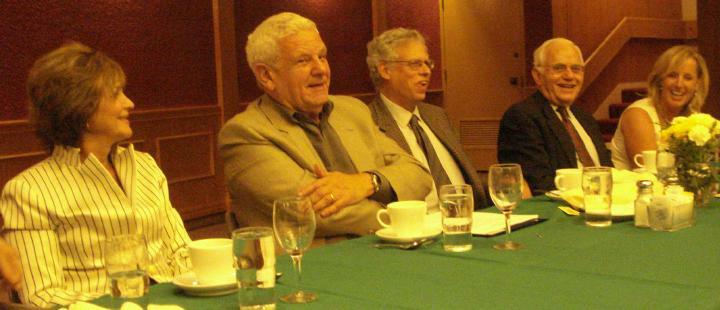
June 16, 2010; 6:30 PM; Prof. Albert Carnesale, UCLA Chancellor Emeritus and
Professor of Public Policy and Mechanical and Aerospace Engineering, was the keynote speaker
at the Global Security Seminar Series. There were approximately 30 persons in the
audience. Carnesale is a renowned expert on nuclear weapons that was hosted by Profs. Bennett
Ramberg and Michael Intriligator at the UCLA Faculty Center co-sponsored by the LA Chapter
of Physicians for Social Responsibility (PRS-LA). Carnesale spoke on the topic of "Moving
Toward Zero Nuclear Weapons Worldwide." Click on the photo for a link to a new report on
the "Non Proliferation Treaty Review Conference 2010: Toward Nuclear Abolition" by
the ICANW (June 2010).
"ZERO NUCLEAR WEAPONS: GOOD IDEA? BAD IDEA? SO WHAT?"
The abolition of nuclear weapons is hardly a new idea. On June 14, 1946 -- less than a year
after the first test of a nuclear device -- Bernard Baruch presented to the United Nations Atomic
Energy Commission a complex, controversial and ultimately unacceptable (to the Soviet Union)
U.S. plan to eliminate nuclear weapons. In 1958, the Campaign for Nuclear Disarmament, a
group known for its slogan "Ban the Bomb," was founded in the United Kingdom. The 1985
Nobel Peace Prize was awarded to an abolitionist organization: International Physicians for the
Prevention of Nuclear War. In 1986, President Ronald Reagan and Soviet leader Mikhail
Gorbachev shared the vision of a world free of nuclear weapons, and in 2007, American
statesmen George Shultz, William Perry, Henry Kissinger, and Sam Nunn (The Gang of Four) re-
invigorated that aspiration. President Barak Obama, on behalf of the United States, has embraced
the goal of eliminating all nuclear arsenals. What would be the implications of pursing a nuclear-
weapons-free world? Is it a good idea, a bad idea, neither, or both?
Prof. Albert Carnesale's research and teaching focus on public policy issues having
substantial scientific and technological dimensions, and he is the author or co-author of six books
and more than 100 articles on a wide range of subjects, including, national security, arms control
nuclear nonproliferation, the effects of technological change on foreign and defense policy, and
international energy issues. He is a member of the U.S. Department of Energy's Blue Ribbon
Commission and America's Nuclear Future, and Chairs two committees of the National Academy
of Sciences: The Committee on Nuclear Forensics and the Committee on America's Climate
Choices. In addition, he serves on the Mission Committees of the Lawrence Livermore National
Laboratory and the Los Alamos National Laboratory; the World Economic Forum's Global
Agenda Council on Terrorism, Proliferation, and Weapons of Mass Destruction; and the Board
of Directors of Harvard University's Belfer Center for Science and International Affairs. Dr.
Carnesale is a Fellow of the American Academy of Arts and Sciences and a Fellow of the
American Association for the Advancement of Science.
During the course of his remarks, Dr. Carnesale pointed out the paradox of our desire to
eliminate the worst weapons ever invented by man (by orders of magnitude) accompanied by the
necessity for verification (with penalties for violation) vs. the systematic reluctance of our
world's leaders to ever forfeit their "sovereignty" in exchange for blanket protection by an armed
military force under UN auspices that virtually nobody would trust to operate in their own
interests, including our own United States of America.
In his concluding remarks, Dr. Carnesale expressed a profound principle of negotiation:
"Beware of the Fallacy of the Last Move." To translate this concept into ordinary English, war is
not necessarily a zero-sum game in which an enemy has been forced to capitulate by
overwhelming odds and therefore sues for peace on any terms (unconditional surrender). Instead,
an enemy may still live after suffering a major blow and still retain the option of a counter move
(repost). If this is a real possibility then if must be accounted for before initiating the very first
move to ensure that one converges on an outcome that is superior to the status quo (minimax
strategy in game-theoretic terms). This frequent failure in constructing a plan for victory is
predicated on the same assumption held by scholars who wish to "have the last word in an
academic argument." If you do have the last word, rather than merely agreeing-to-disagree
among gentlemen, then you have won by default because your adversary was apparently unable
to mount a substantial or legitimate public defense. That's what makes E-mail threads in a
discussion group last as long as they do, when both recalcitrant adversaries relentlessly strive for
a winning position by having the last word.' And this is what makes nuclear weapons such a
challenge, given that the technology genie cannot be put back in the bottle.
Prof. Carnesale recommended watching a new documentary film entitled The Nuclear
Tipping Point. Click for more details at the
Nuclear Security Project website. This film focuses on conversations with four
men intimately involved in American diplomacy and national security over the last four decades.
Former Secretary of State George Shultz, former Secretary of State Henry Kissinger, former
Secretary of Defense Bill Perry, and former Senator Sam Nunn. They share the personal
experiences that led them to write three Wall Street Journal op-eds in support of a world
free of nuclear weapons and the steps needed to get there.
Click on the photo above for a link to the International Campaign to Abolish Nuclear
Weapons (ICAN) Report, "NPT Review Conference 2010: Towards Nuclear Abolition."
- L. Stephen Coles, M.D., Ph.D., Director PSR-LA
______________________________________
Prof. Carnesale replies...
Steve,
I have no objection in principle to your having distributed a summary of my remarks at the
Global Security Seminar; however, I do have some objections to the substance of your message
above
First, I wish you had distinguished between what I said at the seminar and your extrapolations of
those remarks. For example, I raised the problem of relying upon an armed (perhaps even
nuclear-armed) military force under the auspices of the UN to enforce compliance with global
nuclear abolition, and asked the rhetorical question: Would you rely upon that? I neither said nor
implied that the problem is "the systematic reluctance of our world's leaders to ever forfeit their
sovereignty." Those words are entirely yours, and are not based on anything I said.
Another example relates to my reference to "The Fallacy of the Last Move." I applied this
concept to the danger of thinking that if global zero were achieved, the world would remain in
that condition forever. Your application of this concept to war and to scholarly debates (i.e.,
your final paragraph, except for its opening sentence) is not based on anything I said.
Second, it seems to me that you should have made clear that the first two paragraphs of your
message are taken directly from Prof. Bennett Ramberg's announcement of the seminar.
I should note that I appreciate having had the opportunity to speak at the Seminar, and I very
much enjoyed the discussion that followed my remarks.
Warm regards,
Al
Albert Carnesale
Chancellor Emeritus and Professor
6387 Public Affairs Building
University of California, Los Angeles
Los Angeles, CA 90095-1656
Voice: 310-267-4353
E-mail: acarnesale at ucla.edu
"Synthetic Bacteria May Soon Do Useful Functions on
Our Behalf"
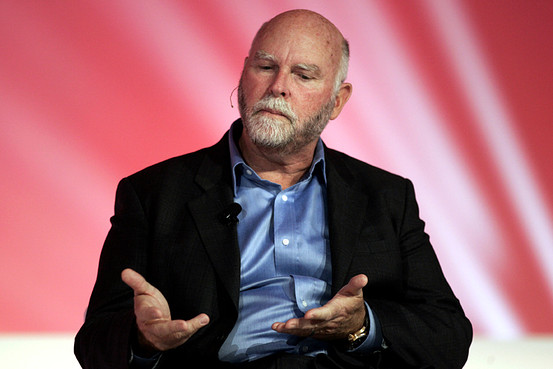
May 21, 2010; Dr. J. Craig Venter, Chief Scientist of Synthetic Genomics, Inc. of
San Diego, CA and Rockville, MD, announced the creation of a synthetic bacterium with many
commercial applications. The DNA has been watermarked to have an audit trail of where it came
from. Click on his photo for the press release.
The Abstract of the publication in Science on-line on May 20, 2010 follow:
"Creation of a Bacterial Cell Controlled by a Chemically Synthesized Genome"
by
Daniel G. Gibson,1 John I. Glass,1 Carole Lartigue,1 Vladimir N. Noskov,1 Ray-Yuan
Chuang,1 Mikkel A. Algire,1 Gwynedd A. Benders,2 Michael G. Montague,1 Li Ma,1 Monzia
M. Moodie,1 Chuck Merryman,1 Sanjay Vashee,1 Radha Krishnakumar,1 Nacyra Assad-
Garcia,1 Cynthia Andrews-Pfannkoch,1 Evgeniya A. Denisova,1 Lei Young,1 Zhi-Qing Qi,1
Thomas H. Segall-Shapiro,1 Christopher H. Calvey,1 Prashanth P. Parmar,1 Clyde A.
Hutchison, III,2 Hamilton O. Smith,2 J. Craig Venter1,2,
Abstract:
We report the design, synthesis, and assembly of the 1.08-Mbp Mycoplasma mycoides
JCVI-syn1.0 genome starting from digitized genome sequence information and its transplantation
into a Mycoplasma capricolum recipient cell to create new Mycoplasma
mycoides cells that are controlled only by the synthetic chromosome. The only DNA in the
cells is the designed synthetic DNA sequence, including "watermark" sequences and other
designed gene deletions and polymorphisms, and mutations acquired during the building process.
The new cells have expected phenotypic properties and are capable of continuous
self-replication.
Science has now posted a
Q&A Section on this topic... "Synthetic Biology Breakthrough: Your Questions Answered
(May 21, 2010). For example,
Q: Can this technology help us increase human lifespan? Can it help cure diseases like diabetes
and cancer?
E.P.: Although this achievement was a milestone for synthetic genomics, it represents just a very
small step toward harnessing synthetic biology to improve health and cure diseases. Next the
team is going to try to make synthetic genomes that carry the instructions for bacteria to make a
flu vaccine, but no one knows how difficult that step will be.
Elizabeth Pennisi, "Genomics: Synthetic Genome Brings New Life to Bacterium,"
Science, Vol. 328, No. 5981, pp. 958-9 (May 21, 2010).
Refs.:
1. "Scientist: 'We didn't create life from scratch'"
CNN-TV (May 21, 2010).
2. Robert Lee Hotz, "Scientists Create Synthetic Organism," The Wall Street Journal,
pp. A1,6 (May 21, 2010).
3. J. Craig Venter and Daniel Gibson, "Editorial: How We Created the First Synthetic Cell,"
The Wall Street Journal, p. A17 (May 26, 2010).
4. Shelly Banjo and Robert Lee Hotz, "Video: Scientists Create First Synthetic Cell"
The Wall Street Journal Digital
Network (May 20, 2010).[TRT = 3:55 min.]
5. Thomas H. Maugh, II and Shari Roan, "Cell Is Step to Artificial Life: Scientists Create a
Bacterium Controlled by DNA Made in a Lab. The Research Is Called a Major Feat ," The
Los Angeles Times, pp. A1,18 (May 21, 2010).
6. Nicholas Wade, "Synthetic Bacterial Genome Takes Over a Cell, Researchers Report," The
New York Times, pp. A1, 17 (May 21, 2010).
7. Natalie Angier, "Peering Over the Fotress That Is he Mighty Cell," The New York
Times, pp. D1,4 (June 1, 2010).
8. Dan Vergano, "Scientists Unveil First Man-Made Bacteria," p. 3A, USA Today (May
21, 2010).
9. Joe Palca, "Scientists Reach Milestone On Way To Artificial Life,"
NPR-
Radio (May 21, 2010).
10. "Scientists Report First Cell Made with Artificial Genes"
World Science (May 20, 2010).
11. Megan Scudellai, "First Cell with Synthetic Genome,"
The Scientist
(May 20, 2010).
12. John Hudson, "The Ethical and Philosophical Questions Raised By Creation of First
Synthetic Cell," Atlantic Wire (May 22,
2010).
13. Briefing: Artificial Lifeforms, "Genesis Redux," The Economist, pp. 81-3 (May 22,
2010).
14. Carl Zimmer, "Synthetic Genome+Natural Cell=New Life?,"
Discover Magazine (May 21, 2010).
15. "Vatican Calls Synthetic Cell Creation 'Interesting'," CNN
(May 22, 2010).
16. Andrew Brown, "Has Venter Made Us Gods? Does Craig Venter's Creation of Life in the
Laboratory Finally Squeeze God Right out of the Scientific Universe?"
The Guardian Weekly (May 21, 2010)
17. P. Z. Meyers, "It's Alive" Click for a clip of the original 1931
Frankenstein
film on YouTube TRT = 4:05 min. (May 20, 2010).
18. Old Quote from January/February 2004: "If we [scientists] don't play god, who will?" - James
Watson, Ph.D., awarded the Nobel Prize in Medicine for deciphering the structure of DNA
Recent Quote by the Roman Catholic Church to Craig Venter: "Don't play God!" - - The Vatican
[15]
"But I'm not playing!" - - J. Craig Venter, Ph.D.
"The Human Genome and Theology"

Sunday, May 16, 2010; [11:00 AM - 2:00 PM]; Center for Inquiry in Hollywood, CA - Dr. John
C. Avise (pronounced "Avis"), Distinguished Professor of Ecology and Evolution at the
University of California at Irvine spoke on his latest book Inside the Human Genome: The
Case for Non-Intelligent Design (2010). An earlier book was Genetic Gods: Evolution
and Belief in Human Affairs; 1998). Dr. Avise is a member of the National Academy of
Sciences. Four important points in his talk were as follows:
1. Modern mtDNA was formed
~2 Billion Years Ago (BYA) after migration of bacterial structural genes into the nDNA
(for their better protection against random mutations); Different mammals have slightly different
mtDNA sequences, so this must have taken place multiple times during evoluiton.
2. With progress in biotechnology, we can expect to understand the function of all ~25,000
genes in the human genome within the next 20 years;
3. There are ~15,000 "dead" genes in the genome (ones that may have been useful to our
ancestors but have no present value for modern human beings;
4. ~45 percent of all human DNA consists of mobile elements (largely derived from retroviruses)
that have no discernable human function.
There can distinguish at least three different design flaws in the human genome: (1) Fallible
Design (terrible point-mutation diseases either inherited or derived from sporadic mutations
along with a extremely high-rate failure of blastulas to implant in the uterus [> 55%, in which
the Mother-to-be is unaware of her failed attempt to become pregnant] or undergo spontaneous
abortions after implantation [miscarriages in the first trimester, during failed embryogenesis, in
which the Mother-to-be coincidentally became aware of her potential pregnancy]); (2)
Baroque Design (gratuitous complexity with seemingly random exon/intron splicing); and
(3) Wasteful Design (large numbers of repetitive DNA elements, many of which lead
to disease). All of these lead us to the inevitable conclusion that there was no intelligence in the
development of life forms on this planet. Instead, all healthy phenotypes and failure modes
(disease states) can be explained through the simple Darwinian mechanism natural selection of
random mutations (Medelian inheritance) followed by a survival of the fittest-creatures over
many generations. Avise says, "There is no more intelligence in the process of evolution than
there is in the force of gravity."
This conclusion has implications for a clear-cut solution to the apparent problem of
theodicy [as taught in theology classes] (the presence of conspicuous evil in the world, given
that God is presumed to be benevolent and ostensibly should know better.) As a corollary one
concludes that there is nothing sacred about the today's status quo (including the human
condition of mortality that was thrust upon us without our consent). We are not necessarily on a
trajectory to some more perfect world (Heaven or Hell, as the case may be). Furthermore, if there
is no intentionality in the world above the sky, the potential extinction of Homo sapiens
could be contemplated without anyone shedding a collective tear on our behalf.
Another corollary to the conclusion that one need not posit a sentient Intelligent Designer
(ID) to explain the complexity of the biological world, is that we have been relived of a major
intellectual burden - the paradox in which our own desires may conflict with "God's will" (Thy
will be done...) as taught to us by self-appointed prophets. The reason is because there is no
"God's will." This concept is an illusion perpetrated upon us by the clergy of the world's
conventional religions whose original legitimate spiritual purpose was to attempt to make sense
out of the grand mystery of a world we were unequipped to comprehend - - a world in which it
was falsely assumed there must be ( have been) a creator/father/mother figure who takes an
interest in His/Her children as we do with our own children. We did not appreciate that we
inherently lacked the necessary data to come to the proper conclusion when our holy scripture(s)
were first written. But now, finally, it has been revealed to us as a result of
biological/chemical/physical science in the last 50 years. Now we can reach the proper
conclusion that Nature shows no pity toward species that are on the way to extinction. They
should be construed merely as failed experiments. No one will come to our rescue if we
inadvertently screw things up. As Prof. Richard Dawkins explains in his many books, Nature has
a singular disinterest in the affairs of mortal men.
So Now That We Have the Answer, Where Do We Go Next?
We have license to reprogram the human genome using synthetic biology (or clean it up, at
the very least) so that it would be more pleasing to our sense of elegance (or our own engineering
agenda for any aesthetics that may please us, either for the somatic- or the germ-line of our
species) without fear of moral reprimand from those fundamentalists who clearly have their own
conflict-of-interest in perpetuating the status quo. This conflict-of-interest is very similar to that
of capitalism's ideological conflict for those who freely exploit the resources and labor of
impoverished countries with impunity. It explains the inherent conflict and secrecy of those who
do "finger pointing" when things go wrong, like oil spills that cannot be controlled or easily
cleaned up, in which information flows into the public domain with great parsimony (despite
social networking) in the futile hope by ruling capitalists of avoiding devastating class-action
litigation.
"Mr. Mansour Pazargad, former Judge in Iran"
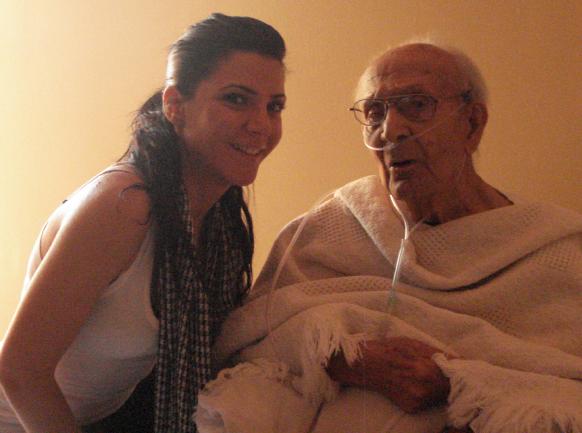

Saturday, May 15, 2010; Noon PDT; According to three of his State of California and US
documents, Mansoor Pazargad was born on December 28, 1896 in Shraz, IRAN and
became a Court Judge in his country of origin. His Son regularly visited the Shah. He moved to
London, UK and then to Los Angeles, CA in 1978 just before the revolution. No documents in
Farsi have yet been located that prove his date of birth under the Persian/Zoroastrian calendaring
system. Narien, a UCLA graduate in psychobiology and native speaker of Farsi (born in Tehran)
served as our translator.
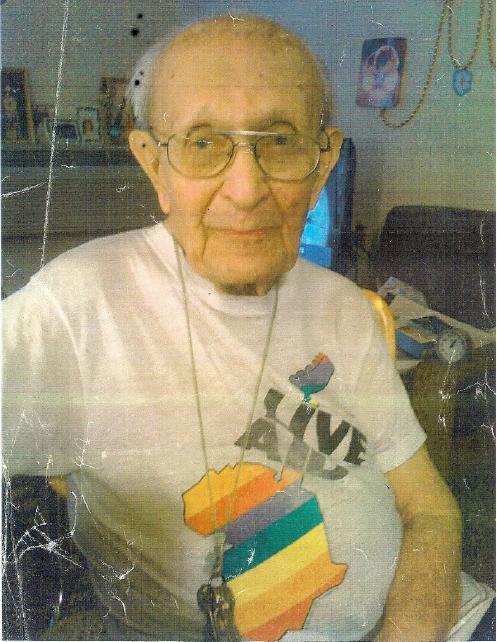

November 18, 2010; We have further confirmation of Mansour's date of birth, given recent
access to his Iranian Passport, written in a combination of Farsi and French.
January 7, 2011; We are sad to report that Mr. Pazargad passed away today at age 114 years,
10 days of pneumonia and complications of a stroke that prevented him from eating normally. A
posthumous validation of his Supercentenarian status would still be possible if the Iranian
Government provides his Son James of Las Vegas, NV with a copy of his original Birth
Certificate (in Farsi).
"Public Discussion of Nuclear Weapons on Earth
Day"
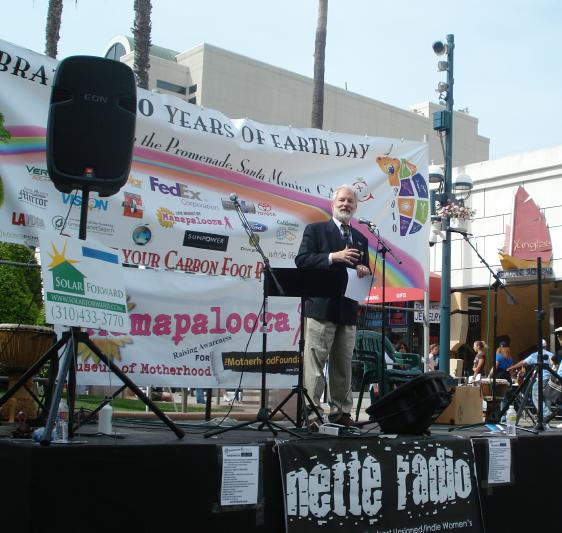
April 17, 2010; [4:00 - 4:15] PM; Dr. L. Stephen Coles, Director of Physicians for Social
Responsibility - Los Angeles (PSR-LA) gave a short public lecture on "The Past, Present, and
Future of US Nuclear Weapons Policy" at the Santa Monica Mall in connection with Earth Day
Celebrations. Click on the photo above for an outline of the talk.
"10 KT IND over Downtown Los Angeles "
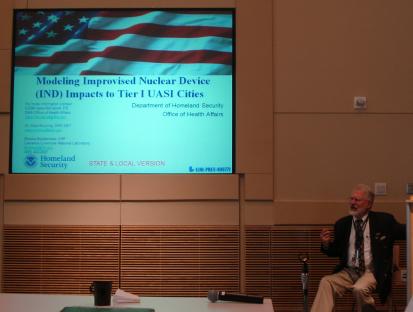
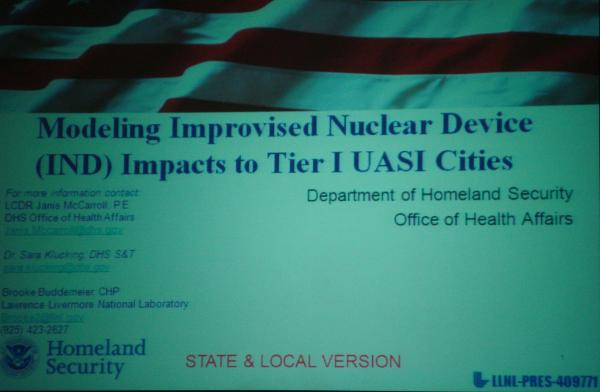
April 2, 2010; Dr. Stephen Coles representing Physicians for Social Responsibility (PSR-LA)
presented a PowerPoint scenario prepared by the US Office of Homeland Security on the
"Effects of a 10 Kiloton Improvised Radiological Nuclear Device (IND) detonated by terrorists
over downtown Los Angeles to the United Nations Association, Southern California Division at
The California Endowment (1000 North Alameda Street near Union Station downtown).
"Secrets of the Oldest Old"
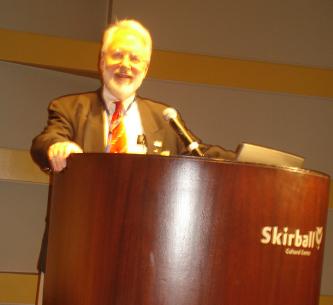
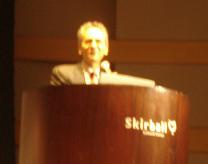
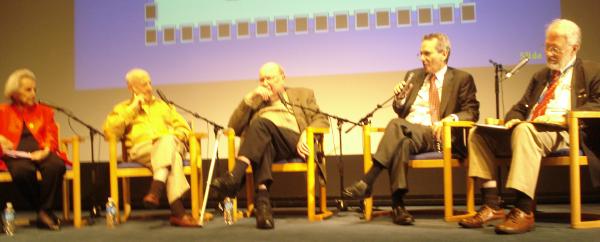
April 1, 2010; The UCLA Center on Aging presented "Secrets of the Oldest Old" at the Skirball
Cultural Center in Los Angeles to an audience of ~200 members of the public moderated by Dr.
Gary W. Small, M.D., Parlow-Solomon Professor on Aging. Three centenarians (Ms. Ruth
Shuken, Mr. Dan Feller, and Mr. Sherman Grancell) provided a perspective on their secrets to
successful aging. (BTW, all had long-lived first-degree relatives [parents and siblings]). The
main insights were as follows: (1) Have a strong social network (be a "people" person); (2) Have
a good sense of humor (crack jokes); (3) Continue education throughout life (learn how to use a
computer); (4) Exercise; and finally (5) Drink a glass of wine with meals every day.
"Inducing Stem Cell Fate "
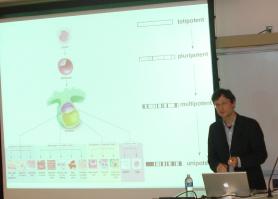
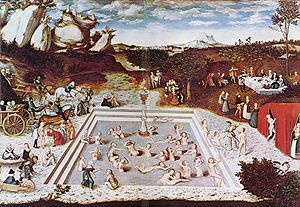
The Fountain of Youth painting by Lucas Cranach, the Elder [1472 - 1553]
Click on the painting for more details.
April 1, 2010; Prof. Marius Wernig, M.D., Ph.D. Assistant Professor of Pathology and Institute
for Stem Cell Biology and Regenerative Medicine at Stanford University gave a talk on
"Inducing Cell Fate Changes by Defined Transcription Factors," at the UCLA Eli and Edythe
Broad Stem Cell and Regenerative Medicine Research Center Seminar at Noon in Lecture Hall
73-105 CHS to a full audience.
"Stem Cell Research on the Internet"
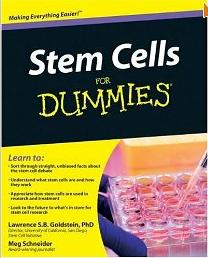
March 11, 2010; Prof. Larry S. B. Goldstein, Ph.D, Director of the UCSD Stem Cell Initiative
and Meg Schneider in their new book Stem Cells for Dummies (Wiley Publishing, Inc.,
Hoboken, NJ; 2010) recommend the following three websites to track the latest
developments in stem-cell research:
1. Science
Daily.
2. Stem Cell Research News.
3. Medical News
Today.
"The Temple of Longevity in Beijing, CHINA"
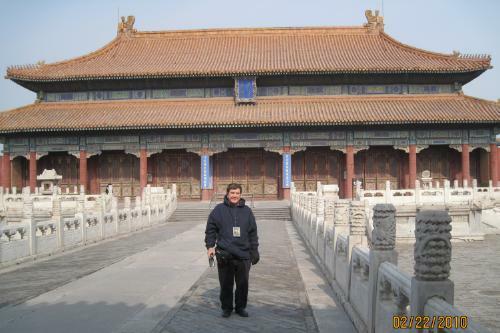
February 22, 2010; Dr. Joseph Schulman (Co-Founder of the LA-GRG and Member No. 6) at the
Temple of Longevity in the Forbidden City (Beijing, CHINA).
"TED Conference in 2010 in Long Beach, CA"
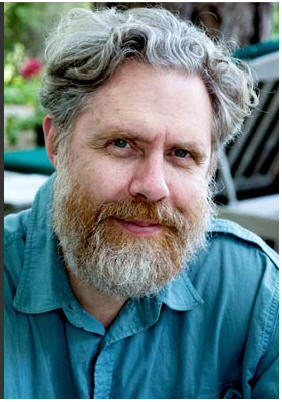
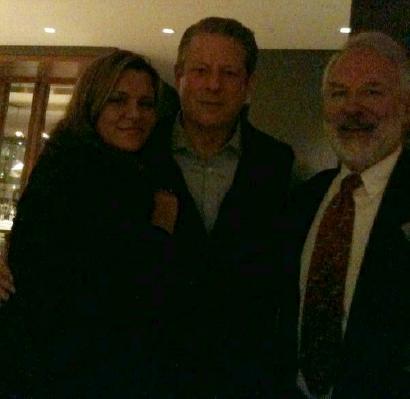
February 11, 2010;
Prof. George M. Church, Ph.D. , Molecular Technologist at Harvard University in
Cambridge, MA will speak tomorrow (Friday, February 12th) at Noon at the TED Conference at
the Long Beach Convention Center on the topic of Genome Sequencing. Click on his photo for
more details on the TED Program. He is a pioneer in genome sequencing and genome
engineering (reading and synthesizing DNA across many species), Prof. Church invented some of
the engineering methods that created the era of the
Personal Genome Project (PGP).
The PGP consists of volunteers from the general public working together with researchers to
advance the field of personal genomics. Prof. Church (at the
Singularity University evening Social Event)
agreed to loan his Harvard IRB to the
Supercentenarian Foundation (SRF), so that we could begin the sequencing of
Supercentenarians immediately while our own SRF IRB application is under review.
Later that evening, Natalie and Stephen Coles had a photo-op with
Nobel Peace Prize Winner, Al Gore taken at the Avia Hotel in Long Beach, CA in
connection with the TED Conference.
[Note: The quality of this extemporaneous photo is extremely poor due to the fact that
it was taken in a dark restaurant on a cell phone camera without flash even after cropping and
brightening, which didn't improve things very much. I'm sure that, someday soon, the
photographic quality of cell-phone cameras will improve considerably in resolution, focus, and
flash. - - Steve Coles]
"Good Video, IS Shoots a 'Myths of Aging' Video"
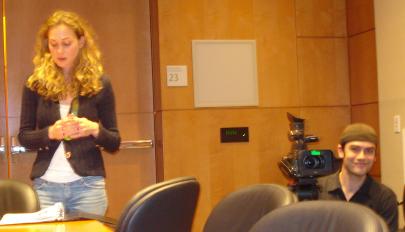
February 10, 2010; Ms. Eve Marson, Producer from Good Video, recorded material at
UCLA for a "Myths of Aging" clip sponsored by The General Electric Company that will appear
soon on YouTube.
The myths covered were...
- - All people lose their memory skills at the same rate and around the same time of life. FALSE
- - Memory loss is an inevitable part of aging. FALSE
- - Drinking alcohol kills brain cells that you can never regain. FALSE
- - Regular exercise helps to keep your brain alert and active. TRUE
- - Trying new things and traveling helps to keep your brain alert and active. TRUE
- - Crossword puzzles help to keep brain synapses active. TRUE
- - Playing bridge helps elderly people keep their minds focused. TRUE
- - You can generate new brain cells later in life. TRUE
- - Social interactions help to reduce the risk of dementia. TRUE
- - Diets high in antioxidants protect against dementia. UNPROVEN, BUT PROBABLY TRUE
- - CT/fMRI/PET scans of football players' brains who have undergone a concussion can provide
insight into memory loss and brain damage. TRUE, ESPECIALLY FOR ANTEROGRADE
AMNESIA
Click on their photo to see a short one-minute video sample of their work on
"brain sharing."
"Public Participation in the Age of Big Bio"


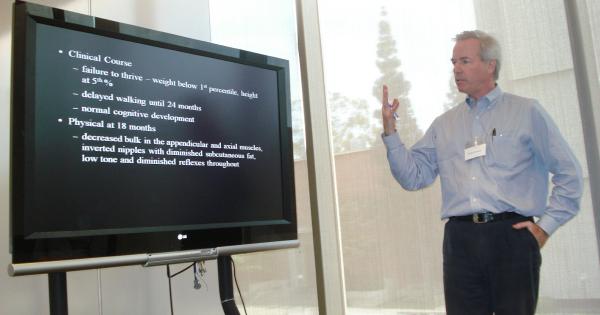

From Left to Right:
Dr. Gaymon Bennett, Ph.D., Bioethics at
SynBERK, UC Berkeley;
Dr. Philip S. Lukeman, Ph.D., Assistant Professor of Chemistry at Cal Poly Pamona;
Dr. Hugh Rienhoff, M.D.
MyDaughtersDNA.org at UC Berkeley; and
Dr. Roger Brent, Ph.D. of the Fred Hutchison Cancer Center in Seattle, WA
January 30, 2010; The UCLA Center for Society and Genetics and the ART|SCI Project
hosted their 8th Annual Symposium on Friday evening and Saturday all day (January 29th and
30th) on "Outlaw Biology Public Participation
in the Age of Big Bio" at the UCLA California NanoSystems Institute(C(n)SI) hosted by
UCLA Prof. Christopher Kelty (Anthropology).
DIY (Do It Yourself) Biology Open-Source DNA Nano-Design Software was demonstrated
in a workshop on Saturday morning and can be downloaded for free (with a tutorial) at
caDNAno.org [parsed as CAD-NANO] with
instructions for how to participate in a contest in which your design may actually be implemented
in real DNA molecules and scanned with an Atomic Force Microscope for subsequent
visualization (value = $1,000).
Click for News Items from 2009.




























